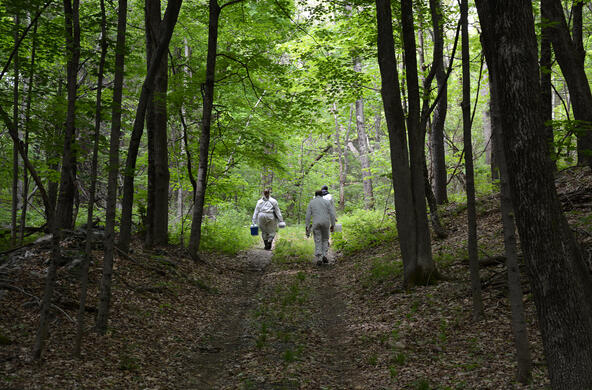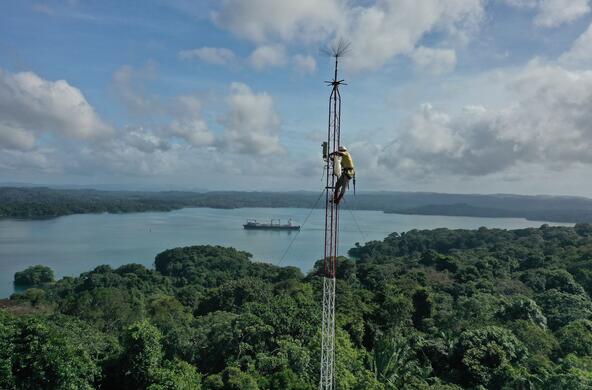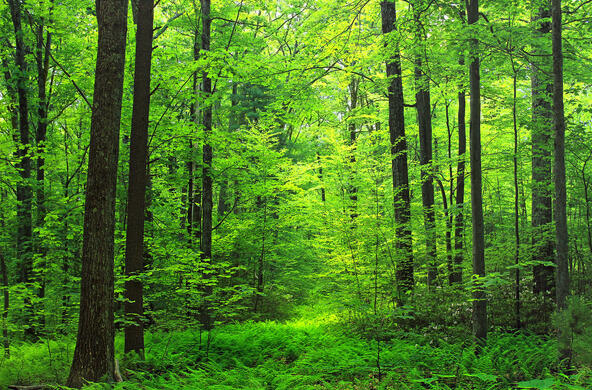Throughout New England, maple trees are currently being outfitted with taps and buckets. The sugaring season has already begun at Duke Farms in New Jersey. The sap from maple trees is destined to sweeten future breakfasts across America. Artificial maple syrup made from corn syrup just doesn’t compare to the real stuff.
Maple sugaring, which dates back to the indigenous peoples of North America, is an elegant mix of biology, physics, and patience.
All trees produce sugars during the growing season. In the fall, these sugars are shunted to storage tissues in the trunk and roots. Some sugars travel from smaller branches down tree trunks in what are called rays cells. Rays hold the sugars that trees use for everything from building new cells to repairing woodpecker damage. They also give us sap.
Sugar maple sap has a high concentration of sucrose—which makes it sweet. It flows freely during the spring. You can tap other species, but you’ll work harder for your syrup. The sap-to-syrup ratio for a sugar maple is 40:1. For a birch, the ratio is 80:1.
What makes sap flow? The answer lies in physics. You need cold nights with temperatures near freezing, followed by sunny days with temperatures in the 40s to 50s (F). This freeze/thaw cycle causes a change in pressure, which forces the sap to run out of the tree and into the sap-collecting bucket.
Converting sap to syrup requires careful attention—undercooked syrup is watery while overcooked syrup can crystallize. Early sap usually produces light amber-colored syrup, with the syrup darkening as the season progresses. This is likely due to changes in sugar concentrations, as early syrup has a high concentration of sucrose relative to other sugars. When the trees begin to use the sugars for their own growth, it heralds the end of the sugaring season.
Already in some regions, the maple sugaring season has moved earlier, due to ongoing changes in climate, especially warmer winters. We can hope that those who tap maple trees can respond accordingly, so future generations will have maple syrup to enjoy.
However, some studies show future declines in maple trees, as the optimal region for their growth and reproduction moves north into Canada as a result of climate change. This may take some decades, inasmuch as a large, old maple tree can often hold its ground in the face of changing climate and other impacts, and at least one recent study suggests that maple trees hold a 3- to 5-year supply of sap to tide the tree over poor growing conditions.
Maple trees like a cold winter; let’s hope that nature will continue to provide those, so the sound, smell, and taste of the spring sugarbush stay with us. If not, climate change will claim another victim.
References
Clark, J.S., A.E. Gelfand, C.W. Woodall and K. Zhu. 2014. More than the sum of the parts: forest climate response from joint species distribution models. Ecological Applications 24: 990-999.
Houle, D., A. Paquette, B. Cole, T. Logan, H. Power, I. Charron and L. Duchesne. 2015. Impacts of climate change on the timing of the production season of maple syrup in Eastern Canada. Plos One 10: doi: 10.1371/journal.pone.0144844
Iverson, L.R. and A.M. Prasad. 1998. Predicting the abundance of 80 tree species following climate change in the eastern United States. Ecological Monographs 68: 465-485.
Muhr, J., C. Messier, S. Delagrange, S. Trumbore, X.Xu, and H. Hartmann. 2016. How fresh is maple syrup? Sugar maple trees mobilize carbon stored several years previously during early springtime sap-ascent. New Phytologist 209: 1410-1416.
Skinner, C.B., A.T. DeGaetano, and B.F. Chabot. 2010. Implications of twenty-first century climate change on northeastern United States maple syrup production: Impacts and adaptations. Climatic Change 100: 685-702.







